Article's Content
There’s never been a tool that I’ve heard so much buzz about at a SaaS conference before as Gong when I attended SaaStr a few years back. Every presentation included a reference to the tool and every sales leader was geeking out about how they used it to win. I’ve said it before and I’ll say it again:
I think one of the players in the conversational intelligence space (ie. Gong / Chorus / etc) is going to be acquired by someone like Salesforce or Microsoft for billions of dollars someday. The technology that they’ve built and the insights that they’ve gathered through recording data & AI is unbelievable.
But that’s not what I’m writing to discuss today.
Today, I want to talk about how Gong has successfully leveraged LinkedIn to establish brand equity and create a thriving content culture. Let’s get to it…
Content Culture Starts At The Top
One of the easiest ways for a brand to win is to have a CEO that gets and embraces marketing. And Gong’s CEO Amit Bendov understands a thing or two about marketing. It’s not accidental that he has a pair of white glasses in his profile picture on LinkedIn:
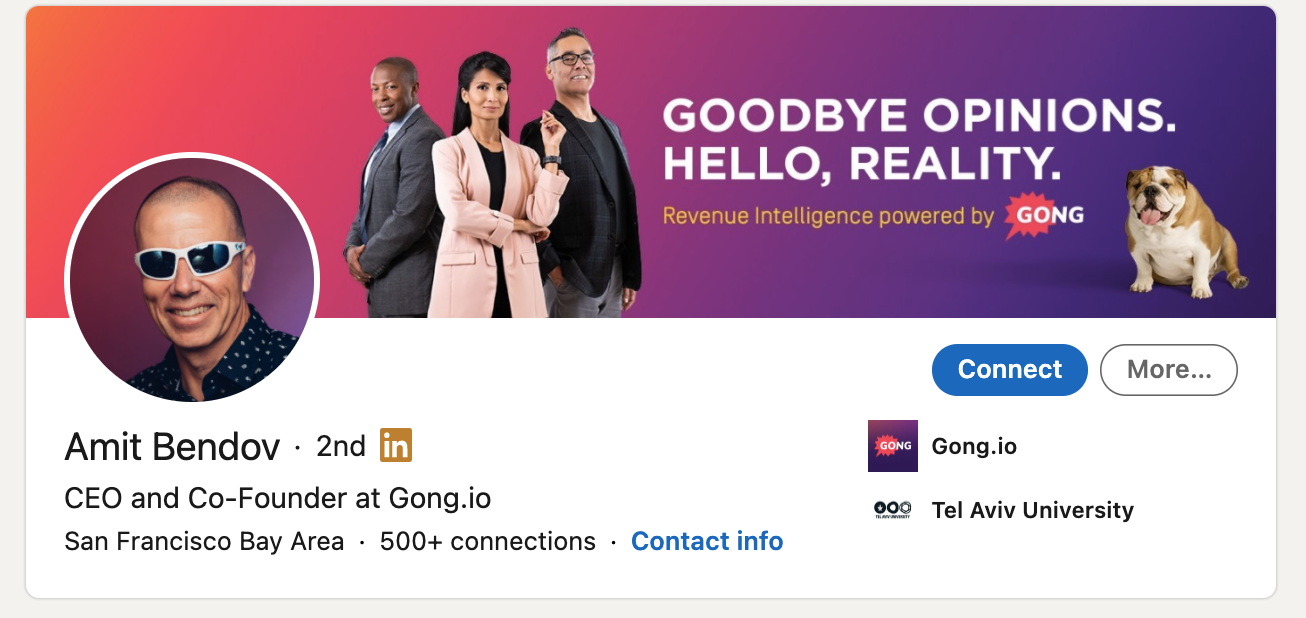
That’s a simple way to stand out.
One of the unfair advantages that Amit brings to the table is that he spent 15+ years working in marketing for software companies dating back to 1992. And their CMO, Udi Ledergor worked with Amit at previous companies.
This experience alone creates a culture internally that not only gets marketing but also is part of the organization’s DNA. Many of the Gongsters (as they call themselves) wear their team colors the same way you would support your favorite team at a football game.
The team uses the Gong colors/gradient on their LinkedIn cover photo and profile picture:
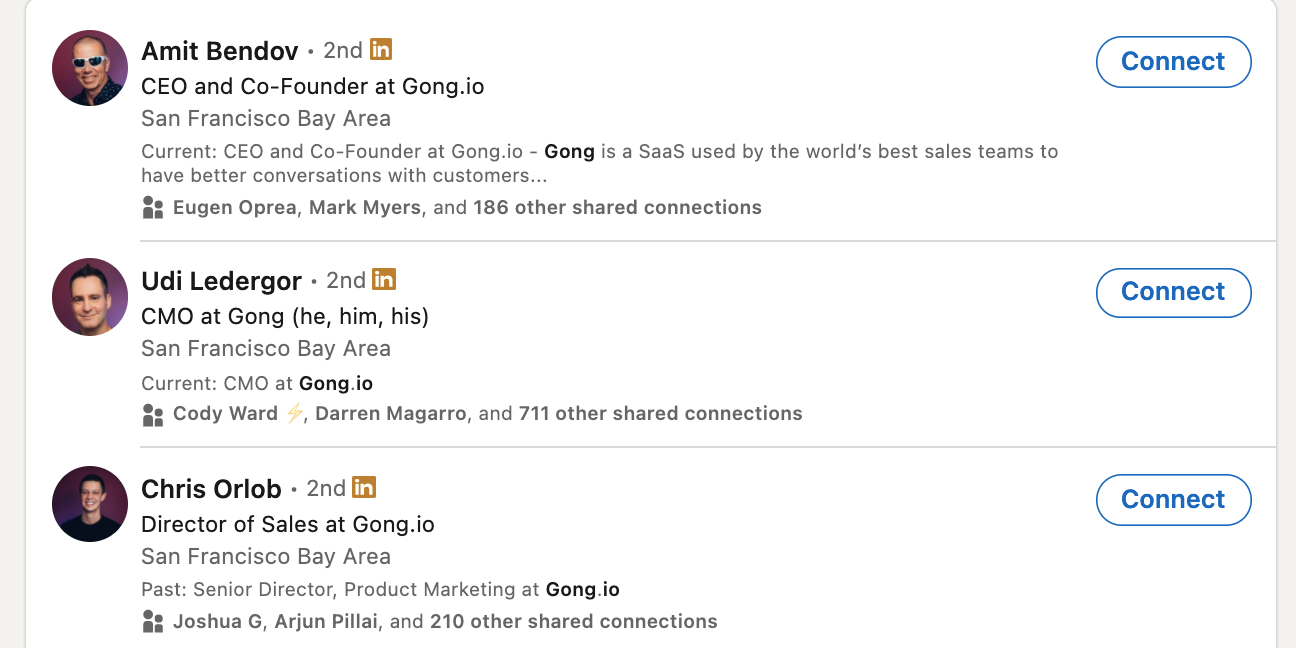
That purple is hard to miss!
But it gets better than this. Not only does the entire team embrace the same color scheme in their profile pictures — the team also embraces the idea of creating LinkedIn content that supports one another and elevates the brand as a whole.
Funnel Your Organic Traffic To Social Channels
It’s estimated that Gong generates 7.4 million visits a year and roughly 300,000 of those visits come from organic traffic. According to SimilarWeb, the vast majority of their traffic comes direct followed by organic & email:

This is quite interesting.
It’s rare to see organic represent a level of traffic similar to something like email but that’s an essay for another day. I wanted to talk about their general traffic numbers because they’re intentionally striving to take those visitors and move them further into their content world (ie. LinkedIn).
At the bottom of their blog posts you see this CTA:

Follow us on LinkedIn is not the typical call to action to find on a blog. Most common brands are telling people to subscribe to their newsletter, sign up for a demo or some other variation. Gong takes a different approach where they push their thousands of visitors to their LinkedIn so they can build an even deeper relationship with them over there.
It’s paid off…
Gong has 73,154 followers on LinkedIn compared to it’s product rival Chorus which has 20,491 followers.
Once Gong has the ‘follow’ on LinkedIn, they don’t waste it. On average, it looks like Gong shares about 10-15 posts on their company page per week. That’s as many posts most B2B / SaaS companies share on their company page every single year. That volume and consistency helps them win.
Some of the best performing content that Gong share’s with its followers is content that offers data-driven insights:
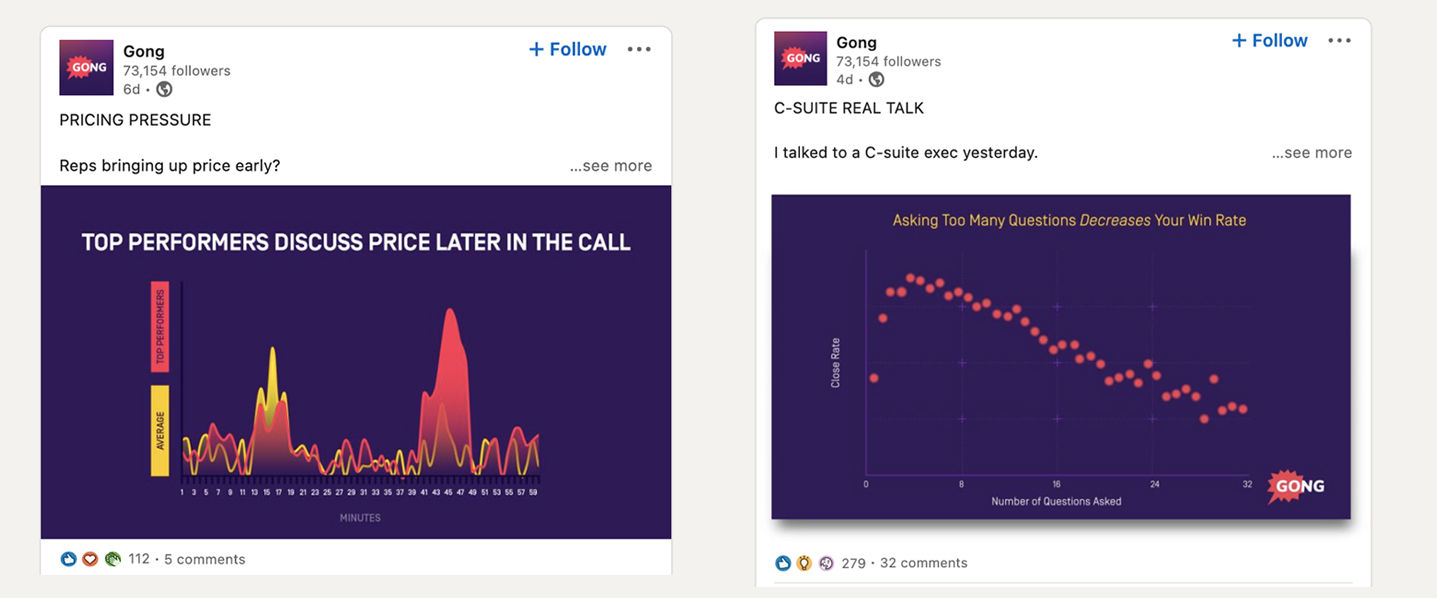
Posts like the two above generate engagement because they’re rooted in data. The data offers their followers simple insights that they can immediately apply to their own sales calls:
1) Mention price later in your calls
2) Don’t ask too many questions when talking to the C-suite
Those two insights are valuable to their followers immediately and it warrants the reason they hit ‘follow’ in the first place.
Understanding The LinkedIn Code
Across the organization at Gong, the team has an understanding of what type of content works well on LinkedIn. This obsession with understanding what type of content resonates with their audience is what we call ‘content-market fit’ and that’s what the Gong team has uncovered.
If you’re not familiar with content market fit, it’s when a piece of content’s value, the customer’s needs/wants, and the distribution channels leveraged by your brand all align. Gong understands that their audience wants opinions, techniques & data and that they’re spending time on LinkedIn.
So…
The next step is to become great at understanding the formats and styles of content that people want on LinkedIn. If you’ve spent any time on LinkedIn, it’s very likely that you will have come across some of the famous waterfalls of text with dramatic pauses and attention-grabbing hooks.
It works.
And Gong gives this type of content to their audience.
Here’s an example from Devin Reed:
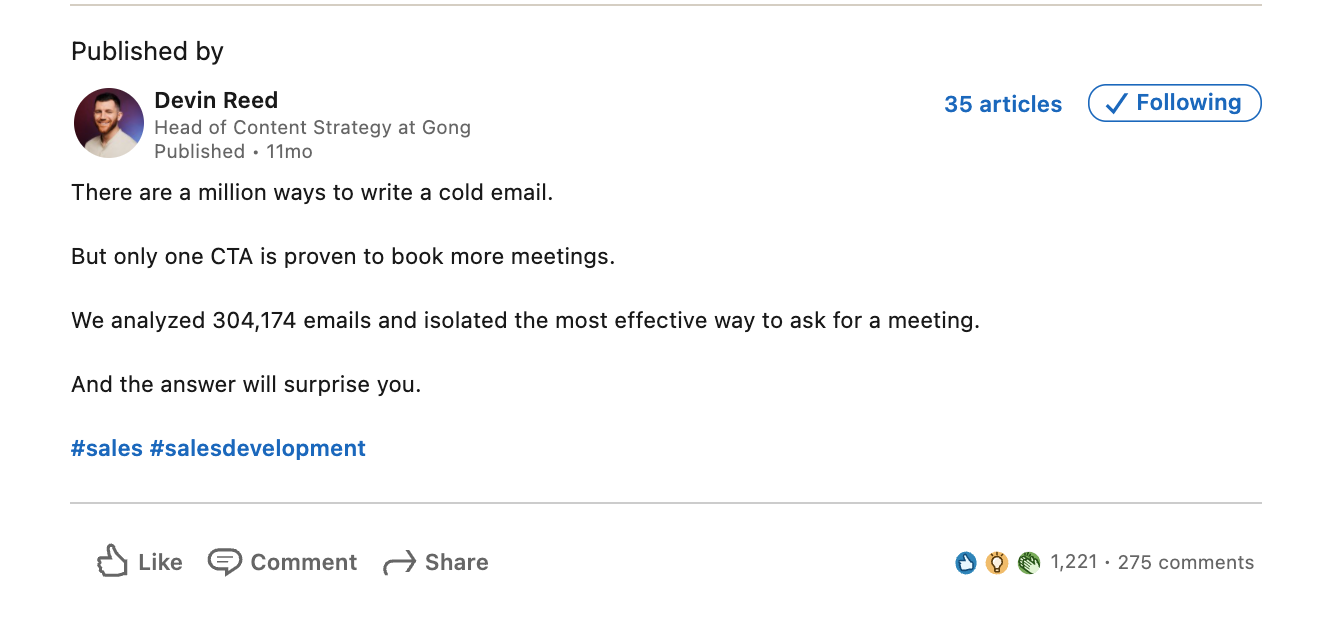
Look at that Lede…
It’s a thing of beauty.
No sales professional could resist not wanting to read that article and see what it’s about. He leverages so many human triggers that will entice someone to click and see what the content is all about:
1) But only one → Makes it feel simple / not intimidating.
2) Analyzed 304,174 emails → Big number means it’s serious
3) The answer WILL surprise you → Bold claim. I like surprises.
Four sentences perfectly strung together to drive people to read this article:
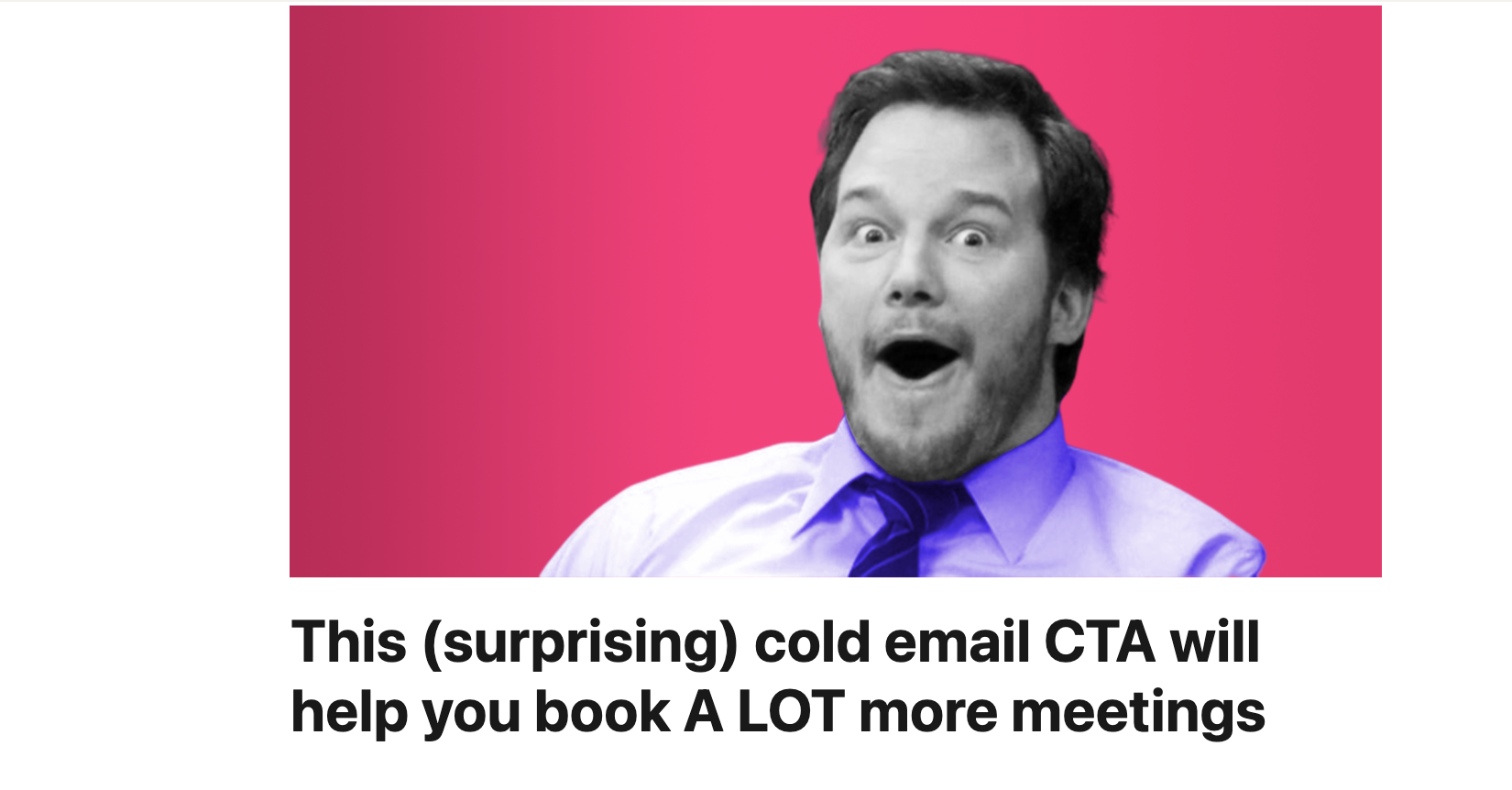
Fast forward after hitting publish and this Gong post has 275 comments and 1,200+ interactions (aka Likes, Celebrates, etc). That means this post has probably reached more than 25,000 people on LinkedIn alone.
Notice something else about that blog post?
Did you notice the amazing graphic they used?
That’s my final point about Gong’s LinkedIn strategy…
Embrace Emotion Driven Imagery
When you see a Gong ad, it’s very difficult to scroll without stopping:

The team understands the power of using emotion in their graphics. In the image above, the visual immediately catches your attention and makes you do a double-take. The copy that goes along with the ad “Don’t take our word for it.” → Is a simple yet powerful way to position social proof around people switching from the competition to Gong.
Imagery is something that Gong takes seriously.
Here are the graphics from two of their blog posts…
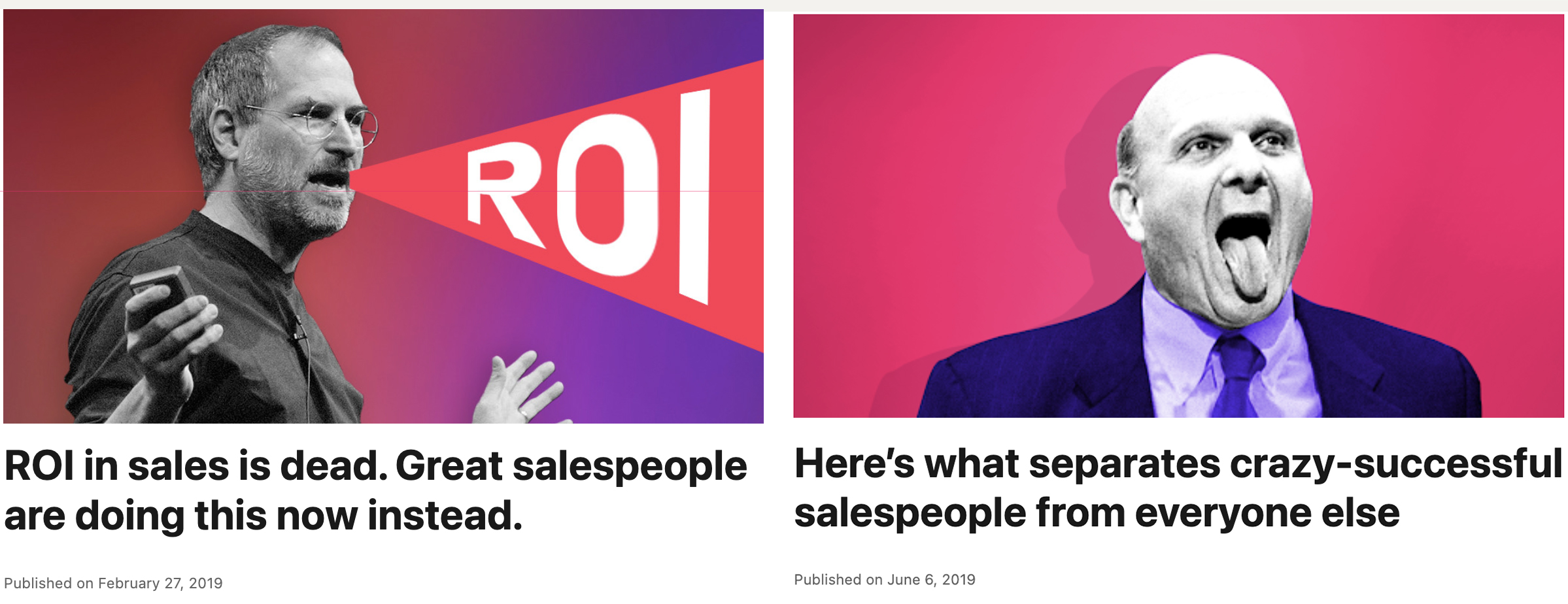
Two things of note here:
1) You have to respect their brand consistency in terms of graphics.
2) You’re once again stopped in your tracks by these visuals.
Here’s a few of the LinkedIn article’s published by a Gongster named Chris Orlob on LinkedIn that both generated over 3,000 likes and 300 comments:
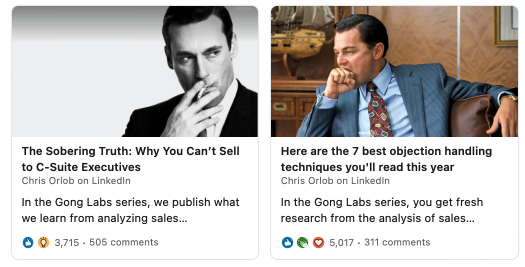
The photos are of two iconic figures in pop culture. Don Draper & the Wolf of Wall Street. These are visuals that are likely to resonate with the sales professionals that their audience is looking to connect with on LinkedIn. While the graphics don’t reflect the same brand aesthetic as the ones above — there’s no question that celebrities catch attention and generate clicks.
So there you have it.
That’s a quick rundown on how one of the most impressive SaaS brands of recent memory has leveraged LinkedIn to connect with sales pros. I’m consistently impressed by how well this team has executed, and I feel like more brands can take a lesson or two from Gong in their own efforts.
Sure…
There’s a few key first principles that Gong understands.
For example, they know and understand what inspires people to share online and like Glassdoor; they definitely know the power of data-driven content.
Once your team understands the fundamentals… The game definitely gets easier, but it’s common to find brands trying to skip steps. Don’t make that mistake. Start by ensuring you have a content culture that is aligned, understanding of best practices, collaborative in nature and competitive in a healthy way that drives more success.
Combine all of these things together, and your team can win.
And you can trust that I’m rooting for ya along the way.







